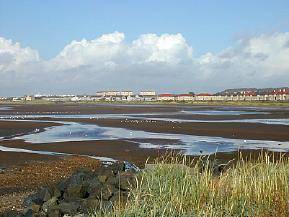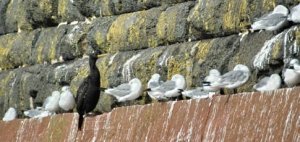Location and Access
![]() There are a number of good birding possibilities in the vicinity of the village of Straiton (NS 8 04) on the edge of Galloway Forest Park in the Southern Uplands. Buses run regularly betweenAyr and Straiton and one companycarries cycles. The village lies on the local cycle byway network (see Ayrshire Paths website for details) and all the birdwatching locations suggested are easily accessible from there by bike.
There are a number of good birding possibilities in the vicinity of the village of Straiton (NS 8 04) on the edge of Galloway Forest Park in the Southern Uplands. Buses run regularly betweenAyr and Straiton and one companycarries cycles. The village lies on the local cycle byway network (see Ayrshire Paths website for details) and all the birdwatching locations suggested are easily accessible from there by bike.
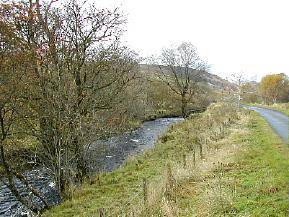 A small car park at the entrance to Straiton from the Ayr side provides a pleasant picnic site beside the River Girvan and is the start of a number of local waymarked walks on which information is available in leaflets from tourist offices and dispensers or from Ayrshire Path’s web site. The village has toilets, a cafe and inn. The recommended birdwatching locations include one of these walks, though any of the others could also be rewarding. The other locations are further up into the hills along the Straiton-Newton Stewart road.
A small car park at the entrance to Straiton from the Ayr side provides a pleasant picnic site beside the River Girvan and is the start of a number of local waymarked walks on which information is available in leaflets from tourist offices and dispensers or from Ayrshire Path’s web site. The village has toilets, a cafe and inn. The recommended birdwatching locations include one of these walks, though any of the others could also be rewarding. The other locations are further up into the hills along the Straiton-Newton Stewart road.
![]() Should be accessible in part, further details to be posted on the website in due course.
Should be accessible in part, further details to be posted on the website in due course.
![]() Straiton on local byway network, linked to National Cycle Route 7. All locations easily reached by bike.
Straiton on local byway network, linked to National Cycle Route 7. All locations easily reached by bike.
Lady Hunter Blair’s Walk
This .5 km walk starts in Straiton from the car park and passes the award winning Fowler’s Croft Development. Itthen follows the B741 past Largs Farm, home to a covenanting martyr,and into the mixed woodland of Lambdoughty glen (NS 89 052) with its sparkling burn and falls, the largest a 10m drop.
Birds:The woodland is good for Jay, Kestrel, Siskin and Redpoll. Red Squirrel and Otter have been seen in the glen.
Blairquhan Estate
This is a private estate, home to the Hunter Blairs, which opens to the public at certain times in the summer. It has a fine mixture of woodland and the River Girvan flows through. The quiet roads around the perimeter are suitable for cycling, strolling or gentle exploration by car.
Birds: Typically Buzzard, Tree Pipit, Dipper, Redstart, Garden Warbler, Blackcap, Wood Warbler, Pied Flycatcher.
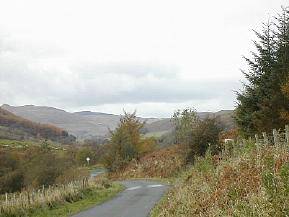
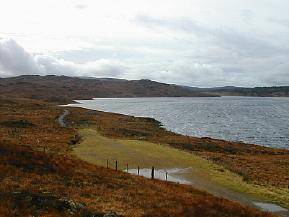
Loch Bradan Water Works Road
The road, signposted Loch Bradan,starts at the Tairlaw Bridge (NS 402 009), 5km up the B740 from Straiton, andruns for 6 km following the River Girvan to its outflow from the loch. Park at the Tairlaw Bridge or by the roadside on the better first 2 km of the road. Walk or cycle the rest of the way to the loch.
Birds<: Very good in spring for migrants. The river has Dipper and Grey Wagtail.
Stinchar Bridge
A car park and picnic site (NX 98 958) with glorious views over the surrounding moors and forests lies just off the Straiton-Newton Stewart road about 11km up from Straiton and is the start of the Cornish Hill Walk. The byway links with a forest cycle route between Loch Doon and the village of Barr. Cars may access forest roads along this byway, subject to forest operating circumstances, and are sometimes permitted to pass right through to Loch Doon in East Ayrshire along the cycle route.
Birds: The 4km stretch of the byway to Ballochbeatties (NX 419 956) passes through conifer stands and patches of mixed woodland out onto open moor. It is good for Meadow Pipit, Bullfinch, Song Thrush and Buzzard. Black Grouse may be seen in the trees beside the road, especially in the spring. Siskin and Crossbill maybe seen during a good spruce cone year.
Forest Drive
Following the byway from Stinchar Bridge into the forest on foot, by bike or car, there are several particularly good view points with views over loch, moor and forest:
- Loch Bradan:can be viewed from various points on the forest drive andthe car park at NX 408 979.
- Criglure Cairn: a footpath starts at NS 409 972 and goes up to the cairn.
- Loch Skelloch:can be viewed from a quarry car park overlooking the loch at NX 411 963.
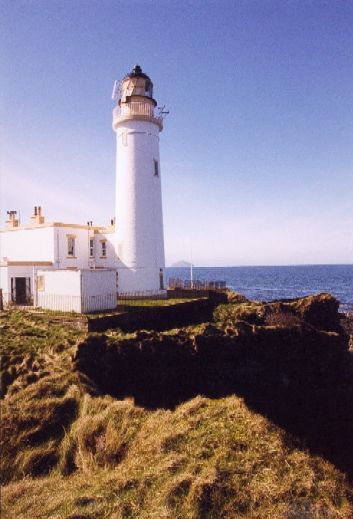
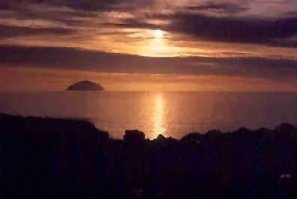 The Course is of world class and has been host to international competitions. It is managed with sympathy for wildlife. A recently formed pool on the inland side of the coast road is worth scanning for ducks and waders.
The Course is of world class and has been host to international competitions. It is managed with sympathy for wildlife. A recently formed pool on the inland side of the coast road is worth scanning for ducks and waders.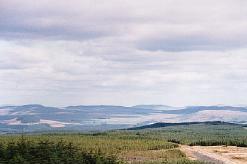 The Cornish Hill Walk is the more interesting ornithologically of the two and as a walk. Though only 5km long, it entails a climb of 100m, quite steep and rough in places. Strong footwear is advisable.
The Cornish Hill Walk is the more interesting ornithologically of the two and as a walk. Though only 5km long, it entails a climb of 100m, quite steep and rough in places. Strong footwear is advisable.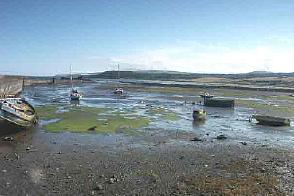
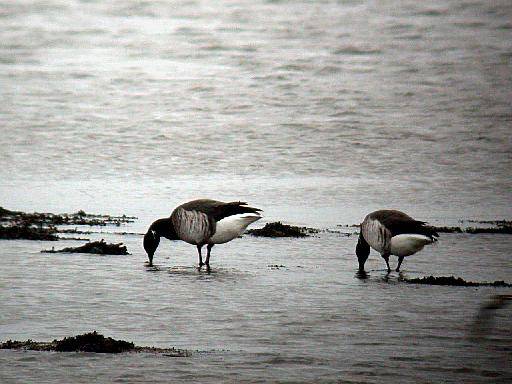
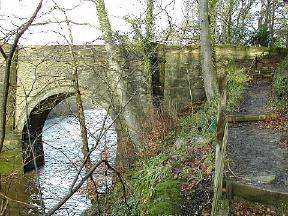 From the car park, cross Oswald’s Bridge, dating to 1826, over the River Ayr. At this point the river is broad and relatively shallow with well established woodland and grassland banks. The bridge is an excellent vantage point from which to scan the diverse and rich habitat. Turn left immediately down to the water’s edge and follow the path upstream through mixed woodland of Beech, Oak, Scots Pine and Japanese Larch. The opposite bank is open parkland. A steep climb away from the river leads to a track across open grassland surrounded by woodland with distant views of the Carrick Hills and Isle of Arran. Then re-enter woodland along the Waggonway Trail following the route of a 19th century railway linking inland coal pits to Ayr harbour, initially using horse drawn trucks and later steam locomotives. The path eventually climbs steeply to a spectacular viewpoint high above the river, reputed to be a favourite of Sir William Wallace of historic fame. The return to start is by a farm track over Loudon Law through a pastoral landscape of open views, very typical of much of Ayrshire.
From the car park, cross Oswald’s Bridge, dating to 1826, over the River Ayr. At this point the river is broad and relatively shallow with well established woodland and grassland banks. The bridge is an excellent vantage point from which to scan the diverse and rich habitat. Turn left immediately down to the water’s edge and follow the path upstream through mixed woodland of Beech, Oak, Scots Pine and Japanese Larch. The opposite bank is open parkland. A steep climb away from the river leads to a track across open grassland surrounded by woodland with distant views of the Carrick Hills and Isle of Arran. Then re-enter woodland along the Waggonway Trail following the route of a 19th century railway linking inland coal pits to Ayr harbour, initially using horse drawn trucks and later steam locomotives. The path eventually climbs steeply to a spectacular viewpoint high above the river, reputed to be a favourite of Sir William Wallace of historic fame. The return to start is by a farm track over Loudon Law through a pastoral landscape of open views, very typical of much of Ayrshire.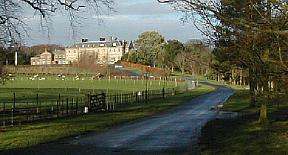 The large building visible up river from the car park and various points along the trail is Oswald Hall, built in 1767 to a design by Robert Adam. Oswald was a wealthy merchant who bought Auchincruive in 1764 and included among his accomplishments the role of chief negotiator during the War of American Independence, earning the nickname Richard the peacemaker. He rose from humble origins to a position of enormous wealth, largely as a result of his involvement in the slave trade – an unpleasant facet of his character – but, no doubt, simply a son of his time.
The large building visible up river from the car park and various points along the trail is Oswald Hall, built in 1767 to a design by Robert Adam. Oswald was a wealthy merchant who bought Auchincruive in 1764 and included among his accomplishments the role of chief negotiator during the War of American Independence, earning the nickname Richard the peacemaker. He rose from humble origins to a position of enormous wealth, largely as a result of his involvement in the slave trade – an unpleasant facet of his character – but, no doubt, simply a son of his time.